From castles to the coastline and vineyards to villages, Lisbon is surrounded by an incredible collection of interesting towns and places that you can easily visit in a day. Step back 2,000 years in Évora, laze by the beach in Arrábida Natural Park, or wander the top of castle walls in Óbidos.
I’ve lived in Lisbon since 2018 and have explored most of the destinations on this Lisbon day trips guide many, many times. Whether you choose to drive north, south, east or west, these are the best day trips you can easily do from the capital.
My definition of a day trip is anywhere I can reach by car in 20 to 90 minutes. Public transport might take slightly longer, and I’ve included the best options for each location too.
Contents
ToggleHow to choose your Lisbon day trip
Below I’ll split Lisbon’s day trips into a few categories, starting with the most popular trips – to Sintra or Cascais, and then splitting them into Lisbon nature and beach day trips, Lisbon history-focused day trips, day trips for food and wine lovers, and deeper off-beat exploring.
Visiting Lisbon for just 3-5 days?
You don’t need 18-day trips! I’d go for one of the classics:
- Sintra is most popular. I’d suggest going guided to navigate the crowds and explore beyond the historic village (this small-group off-road tour is soooo fun or go private with Fernando).
- Cascais is an easy one. Take the train from downtown Lisbon and wander freely around the resort-vibe historic town. This could be a half-day.
- Costa da Caparica for the closest, best beaches. The further south towards Praia de Fonte da Telha, the wilder – though you’ll always find a beach bar or fish grill. Use Uber/Bolt. This could be a half day.
- Setúbal & Arrábida is a favourite of mine that combines food, beach, tiles and wine in a spectacular natural setting. If you have a car, follow my independent route. If not, join this guided day trip.
- Ericeira is another popular coastal town with a great, laidback surfer vibe. You’ll need a car (or join this guided day trip).
Lisbon day trips by car, train or guided tour
If you have a car, you can explore pretty much anywhere you like. If you’re reliant on public transport, you’ll be more limited. I find Rede Expressos coaches will take you to most destinations across Portugal though I prefer to take the train. The train can easily reach Sintra, Cascais, Setúbal, Évora, Tomar, and Vila Franca de Xira. Some Lisbon day trips – like a wine tour around Azeitão – will be better explored on a small-group tour, so I’ll share some options with each day trip suggestion, where relevant.
Map of Lisbon’s best day trip destinations
Two most popular Lisbon day trips
Sintra: Palaces, a Moorish castle & mountain magic
How to reach Sintra – 30-minute drive west from Lisbon; or 40-minute train from Rossio Station (I don’t recommend driving if you just visit the historic village).
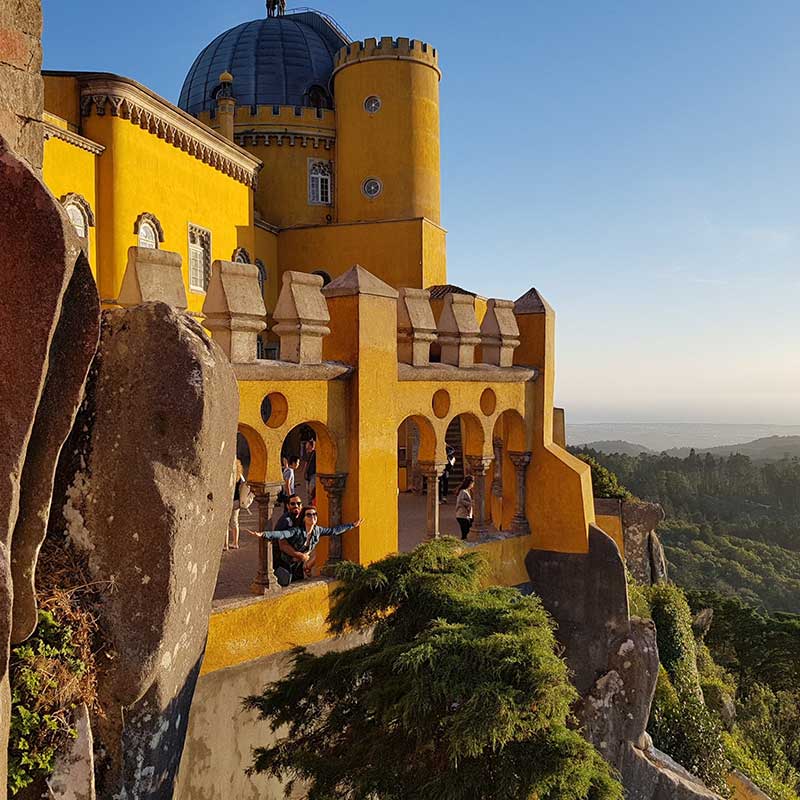
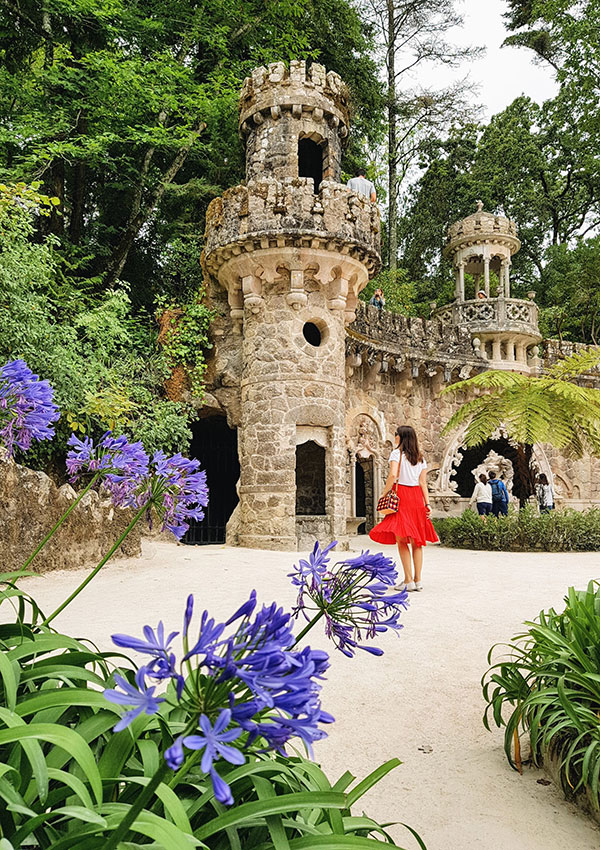
Sintra is pure magic – a misty mountain town of palaces, gardens and legends just 30 minutes from Lisbon. Once the 19th-century summer escape of Portuguese royalty, this verdant destination is still wildly romantic, with the colourful Pena Palace, mysterious Quinta da Regaleira and medieval Moorish Castle just three of many historic palaces and sights scattered across its hills.
My favourite days in Sintra go beyond the historic village. Wander through mossy forests, boulder-lined trails and hidden viewpoints in the Sintra-Cascais Natural Park, or continue to Cabo da Roca, Europe’s westernmost point. Skip driving! Take the train or join a guided jeep adventure. Don’t miss a warm travesseiro pastry from Piriquita before heading back to Lisbon.
This is Lisbon’s most popular day trip. Some palaces have timed entry tickets so a Sintra day trip prior planning. I have two in-depth guides to help: a 1-day Sintra itinerary, and a list of 30+ cool things to do in the region.
Cascais: Chic marina, beaches and galleries
How to get to Cascais – 40-minute drive west from Lisbon; or gorgeous 50-minute train from Cais do Sodre (it’s one of the most beautiful train journeys!)
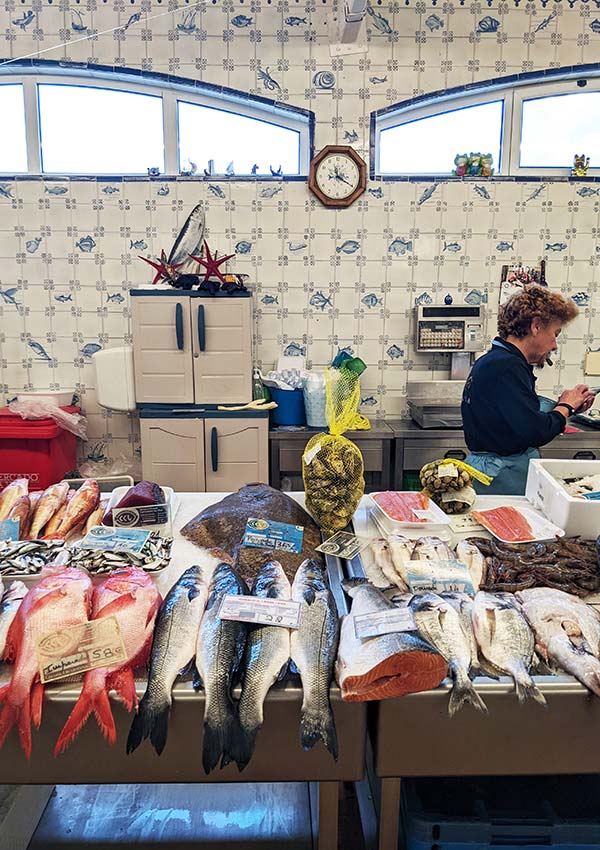
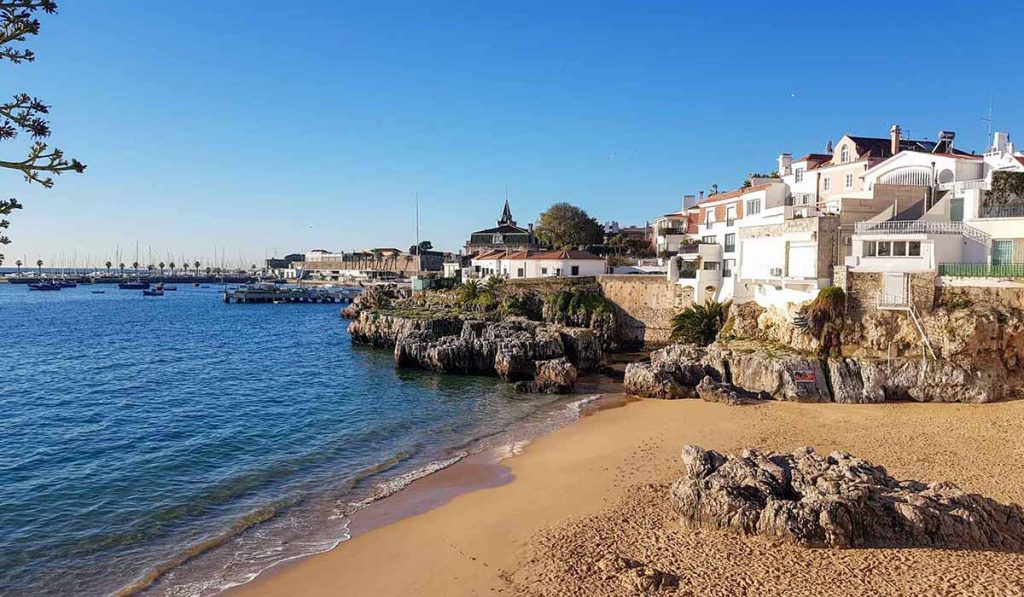
Cascais is Lisbon’s chic seaside escape. Over the past century or two, this former fishing village has blossomed into a sun-drenched resort of elegant 19th-century villas and cobblestone lanes with pockets of sandy beach. Royals once summered here, leaving behind leafy boulevards and graceful mansions that now house art museums and cafés.
Spend the day beach-hopping between Praia da Rainha and Praia da Conceição, shopping fresh produce at the Mercado da Vila, cycling the coastal path to Boca do Inferno’s roaring cliffs, or lingering over seafood rice and vinho verde. Finish with a sunset drive to Guincho Beach or Cabo da Roca.
Read next… 10 perfect days in Portugal: A fast-paced itinerary
Best nature & beach day trips from Lisbon
Ericeira: chilled out surf town
How to get to Ericeira – 40-minute drive north from Lisbon. Slower coach bus with Mafrense from Campo Grande, or join this guided day trip that includes Mafra Palace.
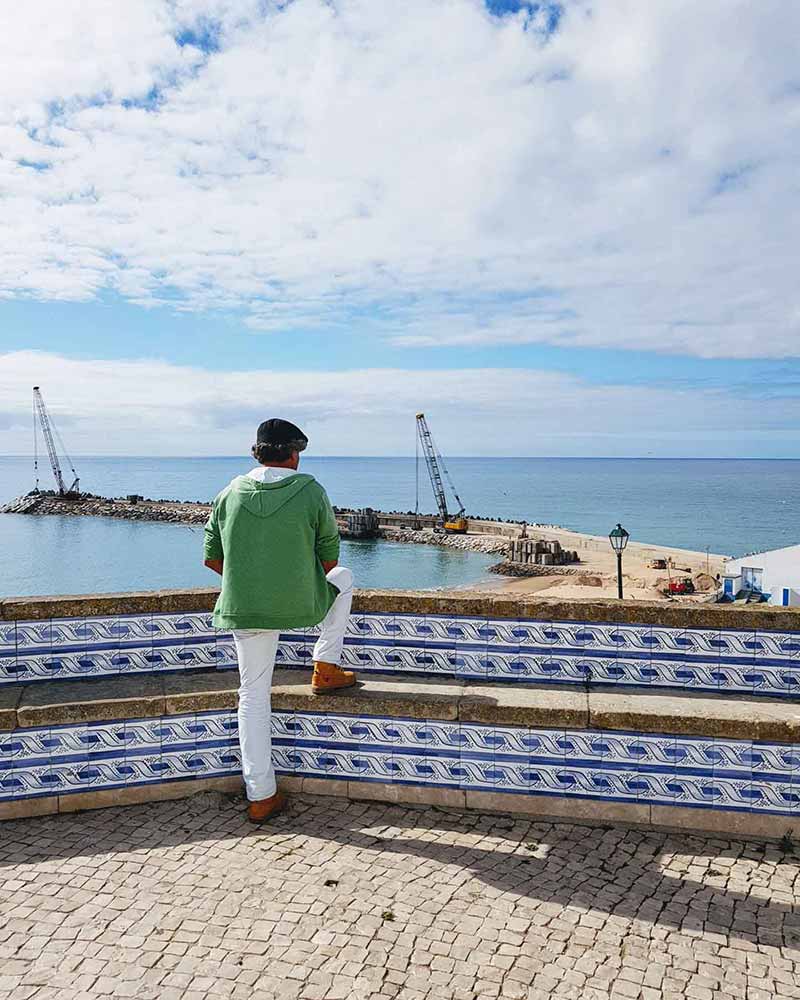
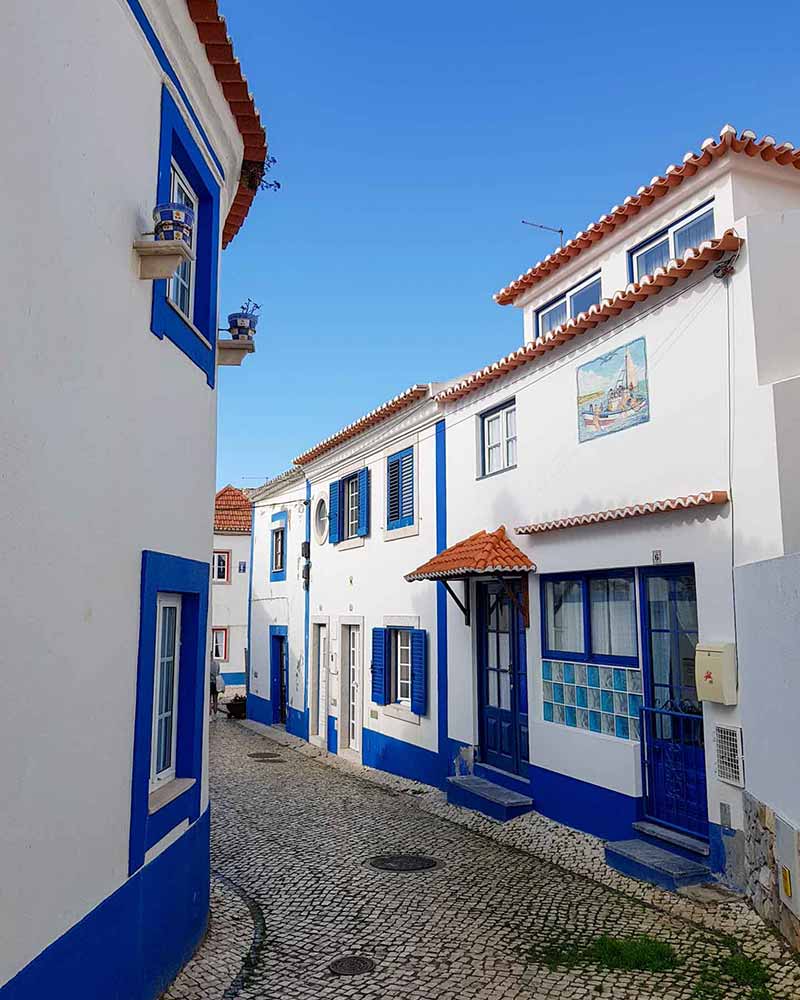
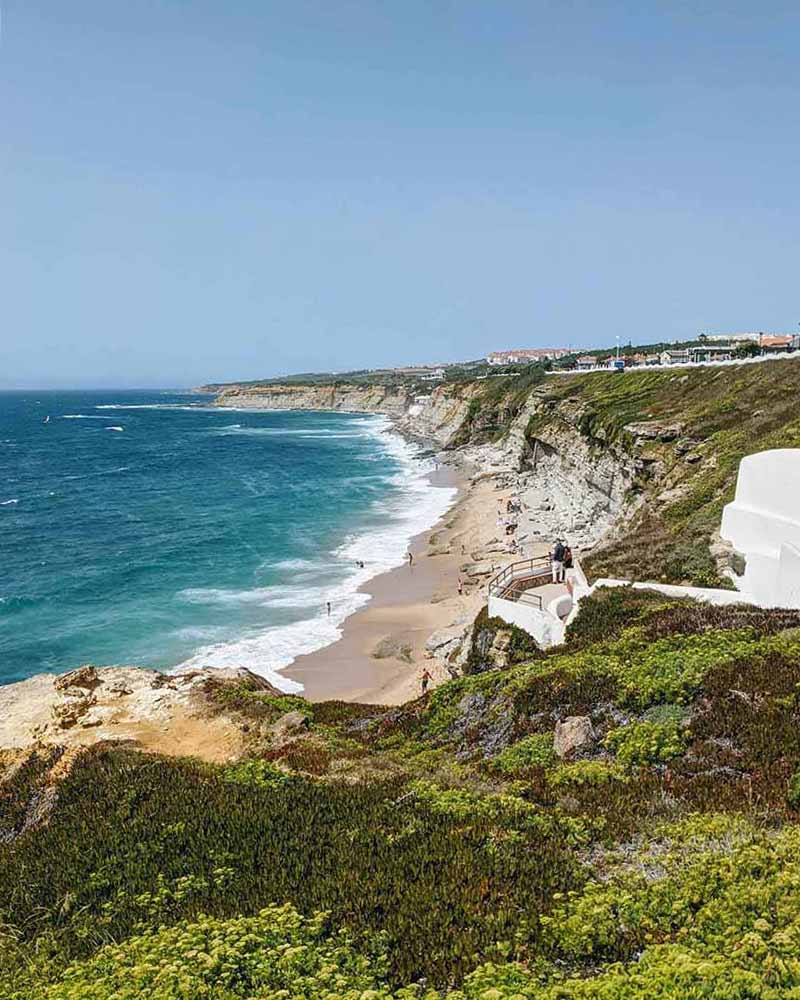
Ericeira is a whitewashed cliffside town where surf culture meets small-town charm. Its cobalt-trimmed houses glow under Atlantic light, framing winding streets filled with cafés, surf shops and yoga studios. As Europe’s only World Surfing Reserve, the laidback is a magnet for international wave riders – yet it manages to hold onto its Portuguese identity.
Start with a flat white and a morning surf, linger over a seafood feast at Costa Fria or a classic marisqueira, then wander the cobbled lanes for an ouriço da Ericeira pastry. End the day with sunset drinks at a clifftop bar, watching the ocean turn gold.
Bonus tip: Combine your trip with a visit to the magnificent Palace of Mafra, a short drive inland, which features a vast Baroque complex. This guided day trip combines the two.
Costa da Caparica: Lisbon’s best beaches
How to get to Costa da Caparica – 20-40 minute drive south from Lisbon, depending which beach you want to explore. Public transport isn’t great – so it’s simpler to use a Bolt rideshare for €10-15 (use this link to get my discount code).
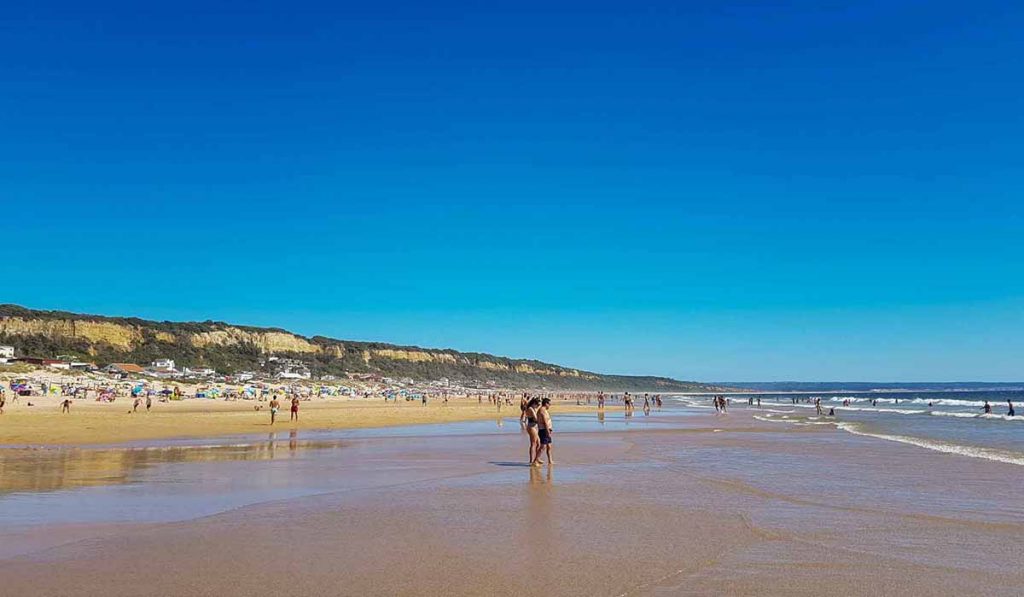
The golden sands of Costa da Caparica stretch for nearly 30 kilometres (18 miles) just south of Lisbon. This sun-drenched playground is where surfers and locals converge (especially on weekends) to escape the city. The namesake town is convenient, but further south towards Fonte da Telha is where the beaches grow wilder, backed by dunes and the fossil cliffs of Paisagem Protegida da Arriba Fóssil.
Mornings often bring traditional fishing boats ashore, which is always a spectacle. For the best seafood lunch, I like Praia Princesa – stay for a dreamy sunset that lasts forever.
Sesimbra: pretty fishing town with stunning beaches
How to get to Sesimbra – 40-minute drive south from Lisbon, or slower options with public buses from Lisbon. You could also take a ferry to Cacilhas, then catch a bus. Google Maps is your bestie.

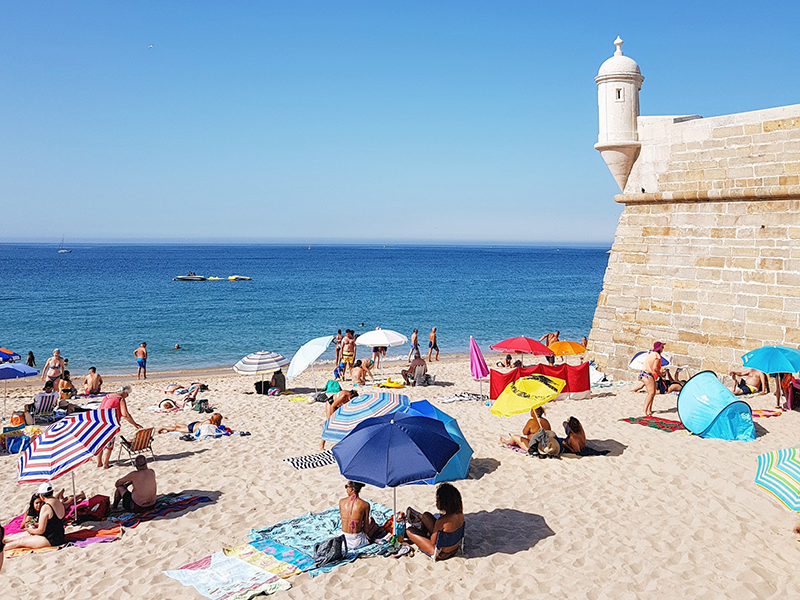
Sesimbra, just 40 minutes south of Lisbon, is a wonderfully unpolished fishing village and low-key resort town. Steep hills, crowned by a 12th-century castle, descend down to calm seas and golden sands. The city beaches – sat either side of an old fort – are a stone’s throw from the restaurant-loaded historic centre. That means you’re never far from a seafood feast or icy swim.
Adventurous types can kayak to Praia do Ribeiro do Cavalo or dive in the Luiz Saldanha Marine Park, while everyone else lingers over ice cream on the main promenade.
Combine Sesimbra with…. exploring the UNESCO World Biosphere of Arrábida Natural Park, it’s neighbour! Or stop in Azeitão on the way there for a wine tasting at José Maria da Fonseca or Quinta da Bacalhôa, famous for their Moscatel dessert wine. Another great detour is Cabo Espichel, a dramatic cliff-top sanctuary nearby, where you can see fossilized dinosaur footprints visible on the rock faces.
Read next… Tile of the day: Sesimbra
Berlengas Islands & Peniche: Raw, rocky islands and a surf town
How to reach Peniche – 75-minute drive north from Lisbon; or take a 90-minute Rede Expressos coach from Sete Rios. Boat trips to Berlengas leave from Peniche (pre-booking recommended).
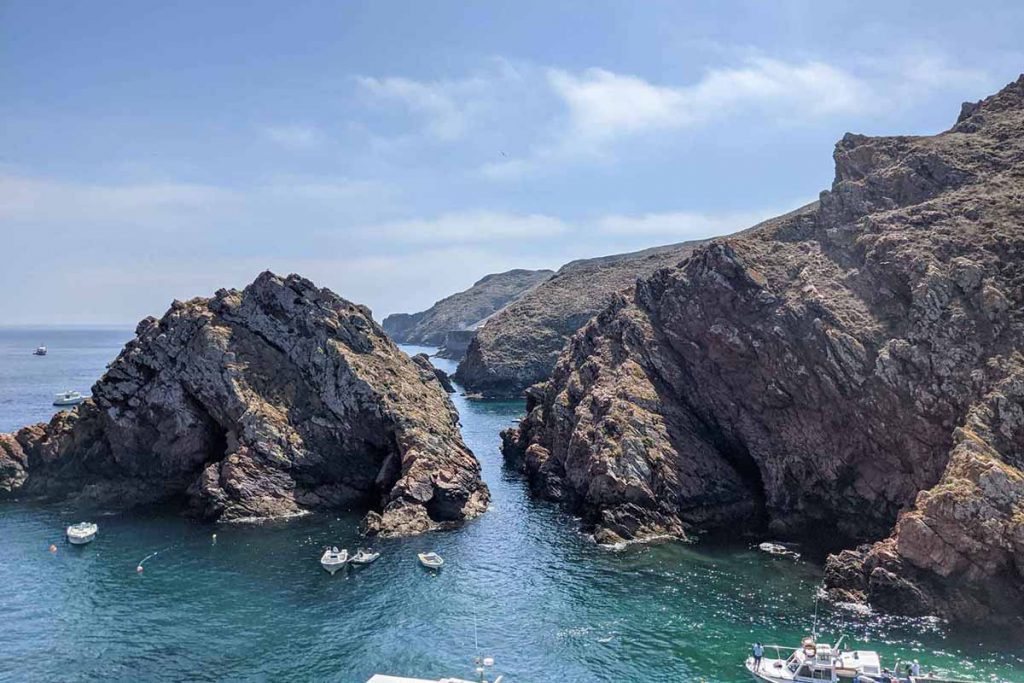
A trip to the Berlengas Islands is one of Portugal’s greatest coastal adventures. Departing from Peniche, a laid-back fishing town 75 minutes north of Lisbon, boats cross the Atlantic to reach Berlenga Grande, a wild, rocky island wrapped in turquoise water. Hike to the Fort of São João Baptista, explore sea caves by boat, or swim at the island’s tiny golden beach before returning to the mainland.
Back in Peniche, wander the cliffs of Cabo Carvoeiro, watch surfers tackle Supertubos, visit the National Museum of Resistance and Freedom, or feast on fresh seafood at local institution Tasca do Joel. Just be warned: this part of Portugal’s west coast is prone to fog.
Comporta: boujee beach escape
How to reach Comporta – 75-90-minute drive south from Lisbon. You need a private car or transfer.
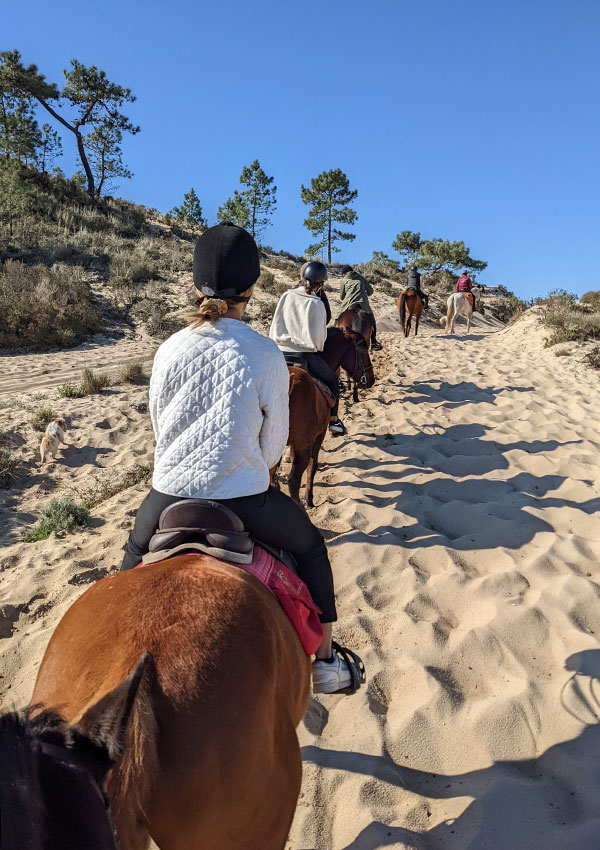
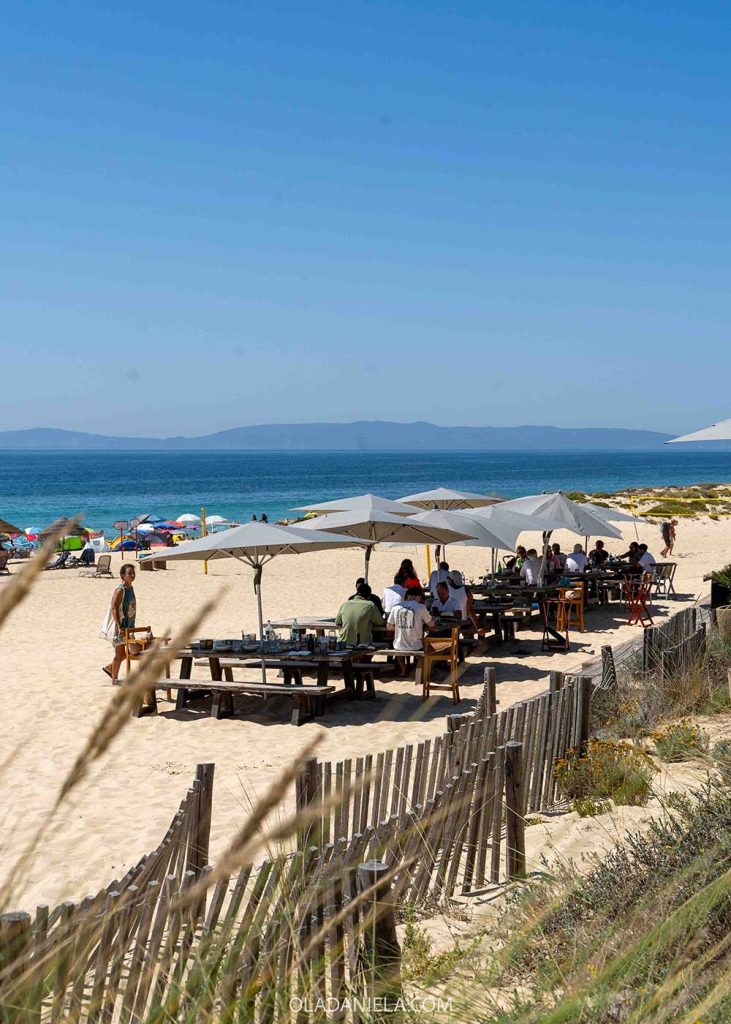
Comporta, a gorgeous sweep of rice fields, pine forest and endless dunes, is Portugal’s barefoot-luxury escape. Once a sleepy fishing area, it’s now dotted with chic cabanas, beach bars and designer boutiques that still manage to feel understated (but often the prices are higher than the capital).
Mornings might mean horse rides through the paddies or birdwatching in the Sado Estuary, afternoons a long seafood lunch at Sal or Comporta Café, and evenings shopping or sipping wine in Comporta village.
Read next… The average person’s guide to A-list Comporta: Portugal’s luxe beach town
Nazaré: big waves, 7 skirts & sun-dried seafood
How to reach Nazaré – 90-minute drive north from Lisbon; more like 2 hours with a Rede Expressos coach.
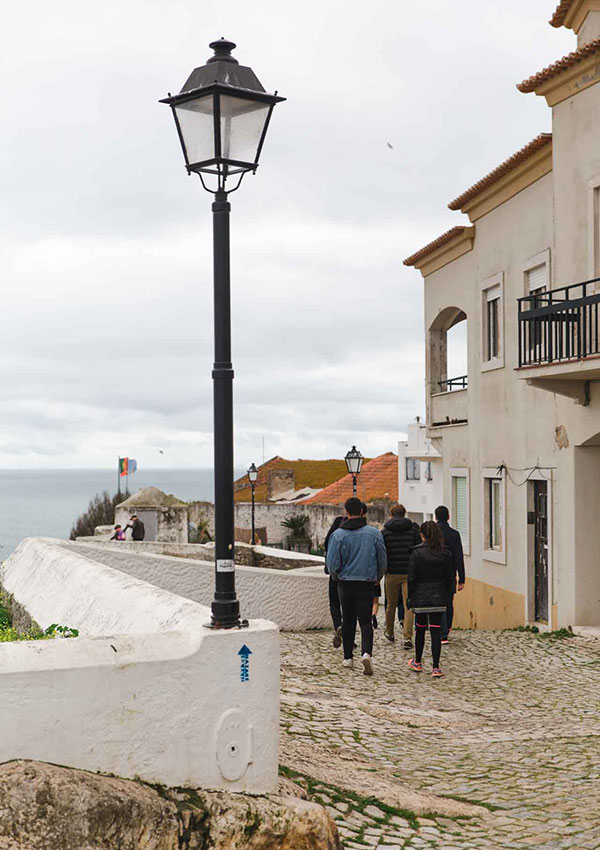


There are two seasons to Nazaré: lazy summer days of grilled fish and striped beach huts, and wild winters when colossal Atlantic waves crash into fame. This once-sleepy fishing village still has its old soul – you’ll still see women in seven-layer skirts and traditional boats painted in bright colours.
Ride the funicular from Praia da Nazaré up to Sítio for sweeping ocean views, the Sanctuary of Our Lady of Nazaré, and the Fort of São Miguel Arcanjo, perched above Praia do Norte. Beneath those waters lies the Nazaré Canyon, an underwater chasm that helps create some of the biggest surfable waves on Earth – drawing international crowds in the winter months. There’s no guarantee of big waves – so watch the surf radar.
➼ Wish someone could shortcut your Portugal research? ➼ Talk to me – I offer 1:1 video calls to help cut through the noise and plan your perfect Portugal itinerary. Find out more here.
Best history & heritage day trips from Lisbon
Óbidos: medieval walled village from a picturebook
How to reach Óbidos – 1-hour drive north from Lisbon; or take an express bus called the Rapida Verde (the regional train takes more than two hours).
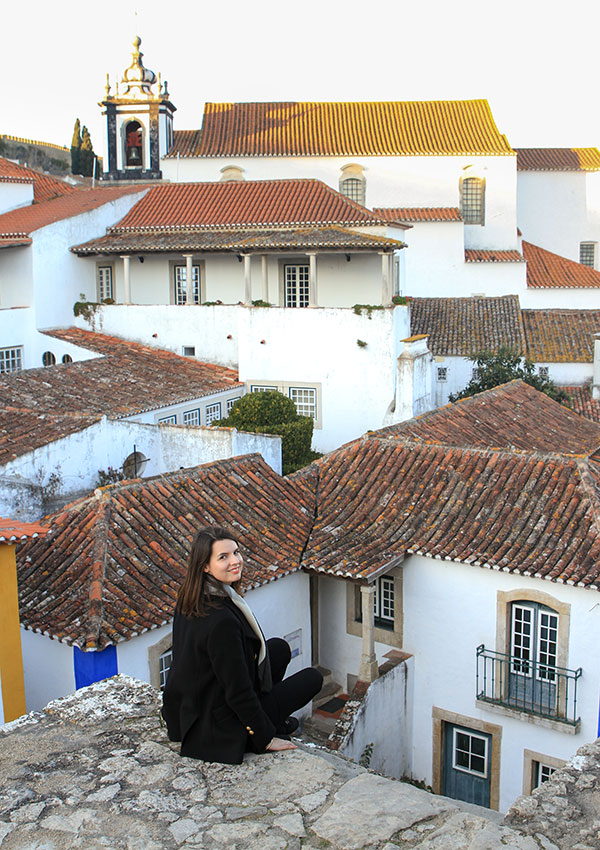
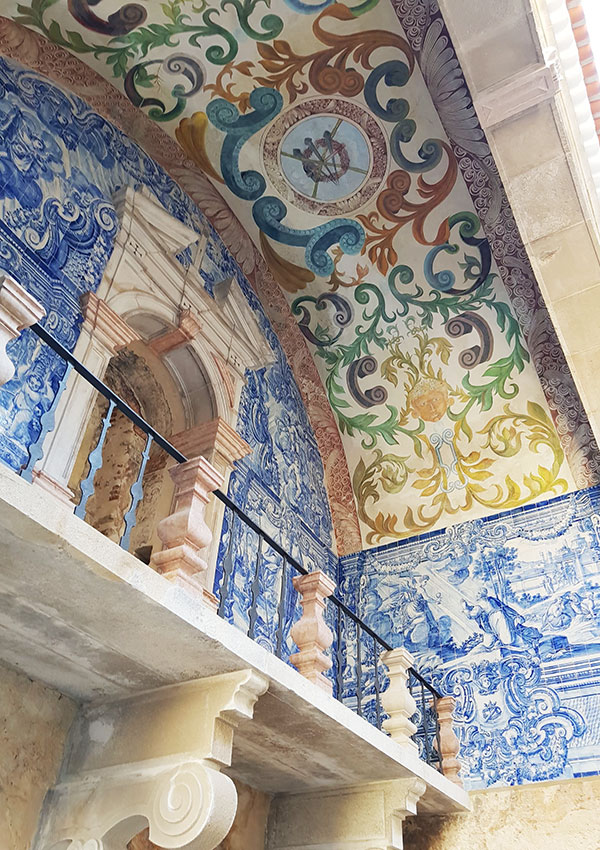
What’s the best wedding gift you can imagine? Legend has it that Portugal’s King Dinis gifted the village to Queen Isabel as a wedding present in 1282. Today, it still feels like a royal treasure. Step through the stone gates to find whitewashed houses trimmed in gold and blue and cobbled lanes lined with bookshops and flower pots.
Climb the castle walls for the best views over the town and countryside. Don’t miss tasting the local cherry liqueur, ginjinha, best sipped from a tiny chocolate cup. If you have time, explore deeper with a walking tour.
Sleep in the castle: This gem is a popular day trip from Lisbon, so if you want to see the village without the crowds, consider sleeping in the 14th-century castle for your own royal moment. The Pousada Castelo de Obidos is a dream stay! If it’s out of budget, Óbidos has plenty of cute guesthouses.
Guided day trip from Lisbon: If you have a few days in Lisbon, Óbidos makes for a good day trip. Take a look at this top-rated guided tour that combines the walled village with the towns of Fátima, Batalha and Nazaré.
Évora: Roman temple, wine & a bone chapel
How to reach Évora – 90-minute drive or train south-east from Lisbon. Note: for a day trip, the last train back to Lisbon often leaves quite early! Better to do an overnight stay by train.
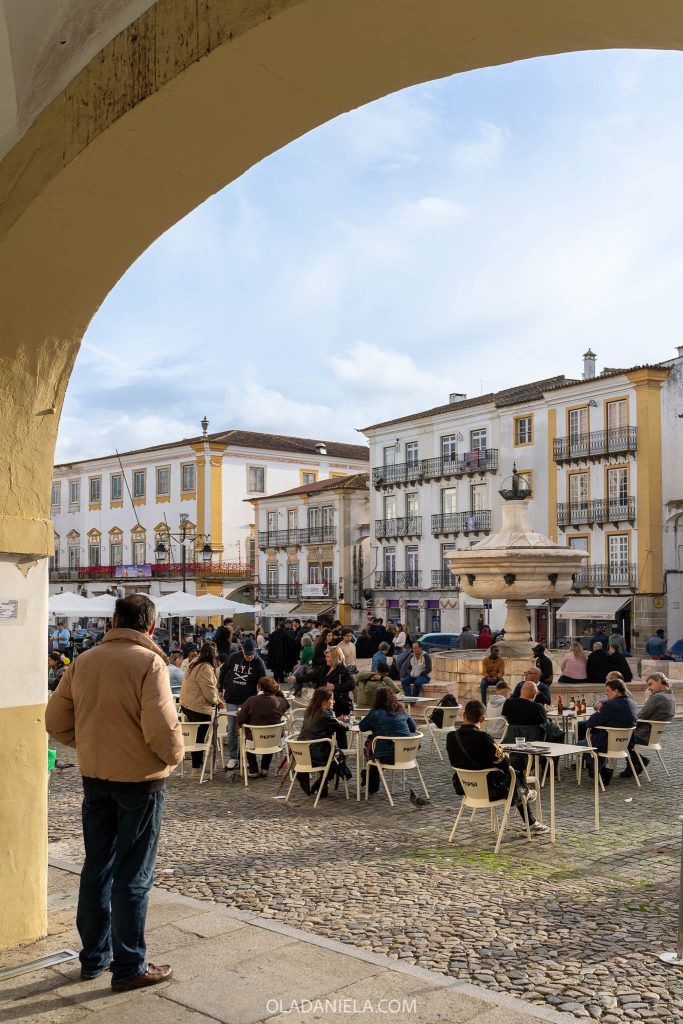
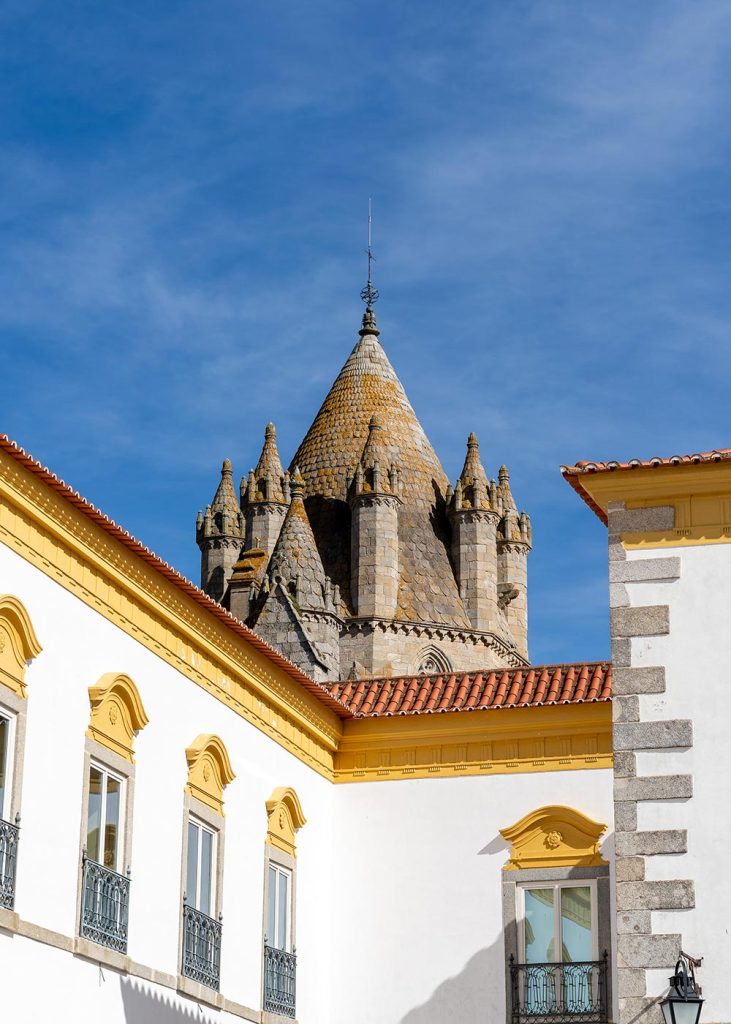
A 90-minute drive or train ride east of Lisbon lies Évora, the magnificent, UNESCO-listed capital of the Alentejo region. At its center stands the Roman Temple from the 1st century, the haunting Bone Chapel lined with skulls, and a massive cathedral whose rooftop offers sweeping views over the terracotta-tiled city.
Personally, I think Évora deserves a full weekend itinerary to soak up history and enjoy the Alentejo’s famously relaxed, slow pace. Part of the charm lies in its slower daily rhythm and delicious local cuisine. Don’t miss the ancient Almendres Cromlech, a mysterious circle of stones older than Stonehenge, just outside town.
Read next… Évora is so much fun and I have some in-depth guides with more ideas for things to do, where to shop, where to eat and how to spend 48 hours in the small city.
Tomar: Follow the trail of the Knights Templar
How to reach Tomar – 90-minute drive north of Lisbon; or the train take two hours from Santa Apolónia Station.
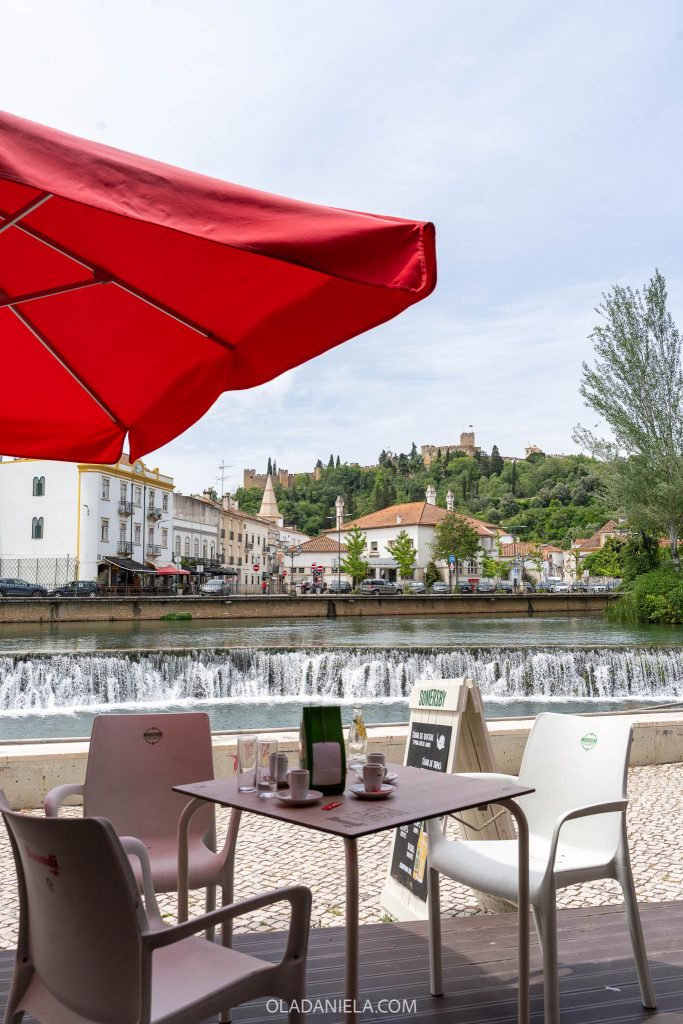

Tomar is a city forever linked to the Knights Templar. Founded in 1160 by Gualdim Pais as their headquarters, it later became the seat of the Order of Christ – the same order that financed Portugal’s great Age of Discoveries.
Tomar’s star attraction is the Convent of Christ, a vast UNESCO-listed fortress with its famous round Templar chapel and intricate Manueline Window. Beyond the convent, wander the pretty old town, stroll Mouchão Park by the Nabão River, or marvel at the 16th-century Pegões Aqueduct stretching across the valley.
Read next… Guide to Tomar: Portugal’s city of Templar legends
Fátima: a sanctuary of faith
How to reach Fátima – 80-minute drive north from Lisbon; or a direct Rede Expressos coach from Sete Rios.
Fátima is one of the world’s most important Catholic pilgrimage sites. It was here, in 1917, that the Virgin Mary is said to have appeared to three shepherd children, a vision that transformed this small rural town into a global spiritual centre.
At the heart of the sanctuary are the Chapel of the Apparitions and two grand basilicas – one historic, one modern. Beyond the religious sites, there’s little else to see, so I’d pair your visit with a trip to the nearby Batalha Monastery, the medieval town of Óbidos, or the coastal vibe of Nazaré.
Best Lisbon day trips for wine & food lovers
Setúbal: historic port city & market town
How to reach Setúbal – 50-minute drive or easy commuter train south of Lisbon.
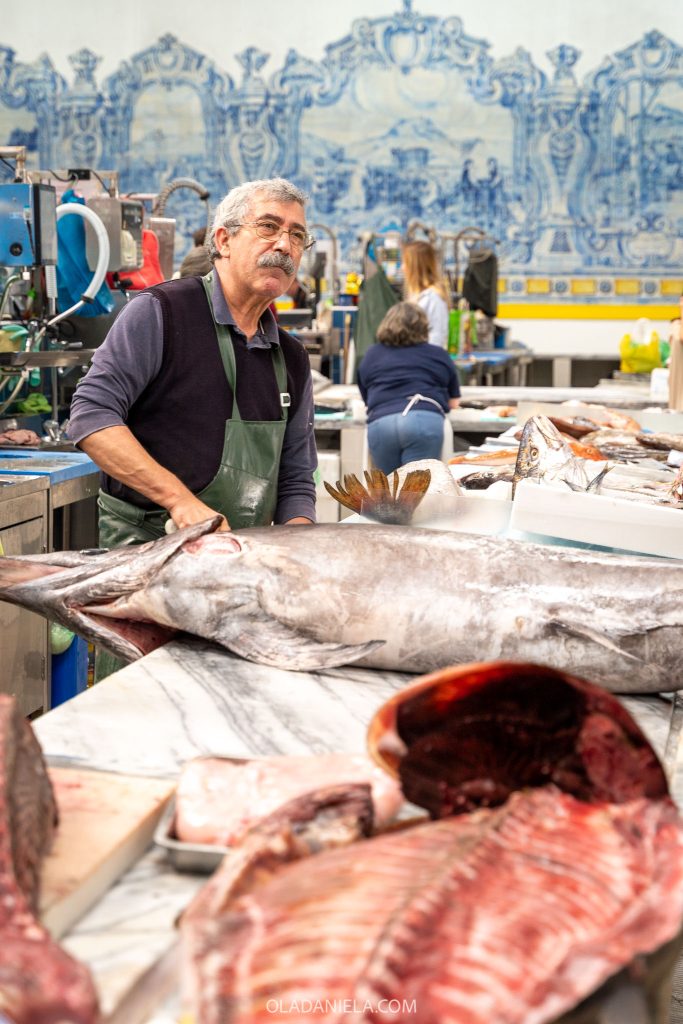

I adore Setúbal, a working port city on the Sado River where life still revolves around the sea. Start your day at the Mercado do Livramento – easily one of Portugal’s best markets – where glistening whole tuna or swordfish share stalls with local oysters and colourful produce.
Wander the cobbled streets of the old town, climb to the fortress of São Filipe for sweeping views, and stay for a lunch of choco frito (fried cuttlefish), the city’s signature dish. In the afternoon, I’d escape to the turquoise coves of Arrábida Natural Park and return later for oysters and wine at the Ostras Sobre Rodas food truck.
Read next… My perfect day in Setúbal & Arrábida Natural Park
Azeitão: wine, cheese & artisan azulejos
How to reach Azeitão – 30-minute drive south of Lisbon; or 50-minute public bus.
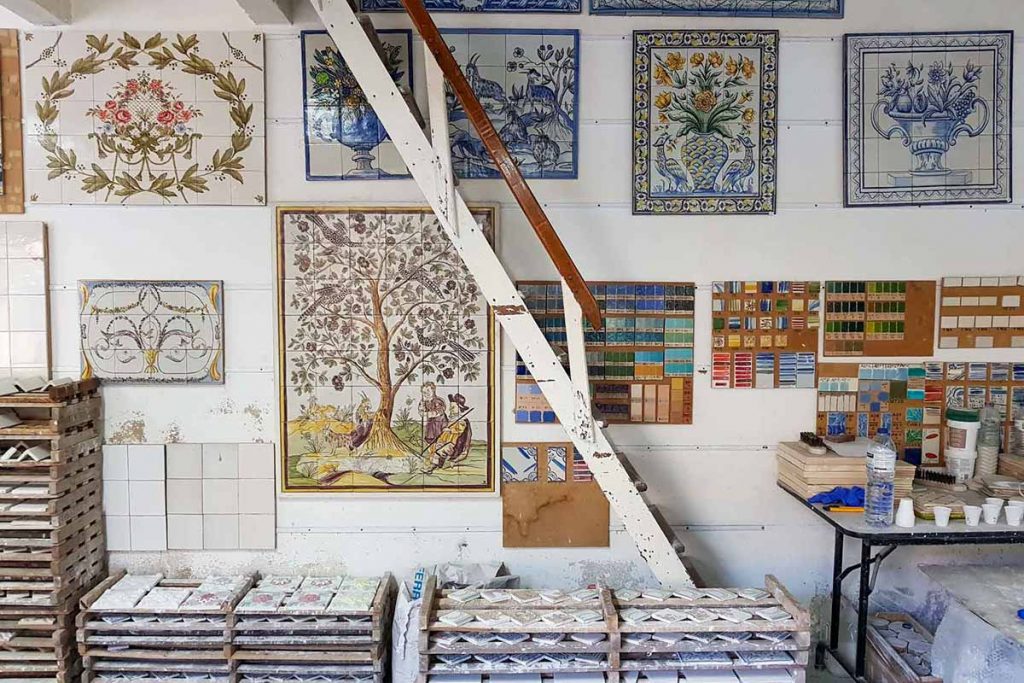
Azeitão, named one of the UN’s “Best Tourism Villages” in 2025, is famous for wine, tortas (local swee) and its creamy queijo de Azeitão – a gooey, pungent sheep’s cheese eaten by the spoonful.
Visit the historic wineries of Bacalhôa and José Maria da Fonseca, sample the local torta de Azeitão cake, and try your hand at tile-painting at Azulejos do Azeitão.
Day trip tip: Azeitão sits on the inland side of Arrábida Natural Park. You can combine Azeitão with Setúbal, Sesimbra, Palmela or Arrábida – or join one of these guided experiences: private wine and food tour, or tiles and wine history tour.
Palmela: castle, windmills and wine
How to get to Palmela – 40-minute drive south from Lisbon; or either take the train from Sete Rios to Palmela Station, then walk for 40 minutes, or take the ferry to Barreiro then catch a bus.
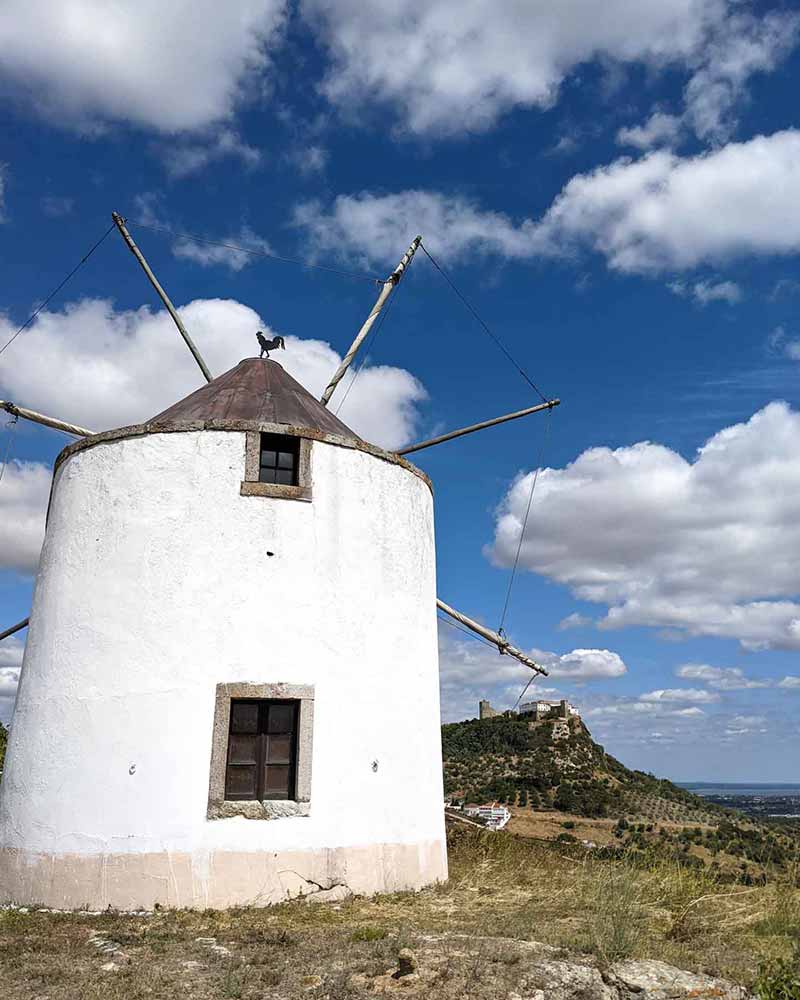
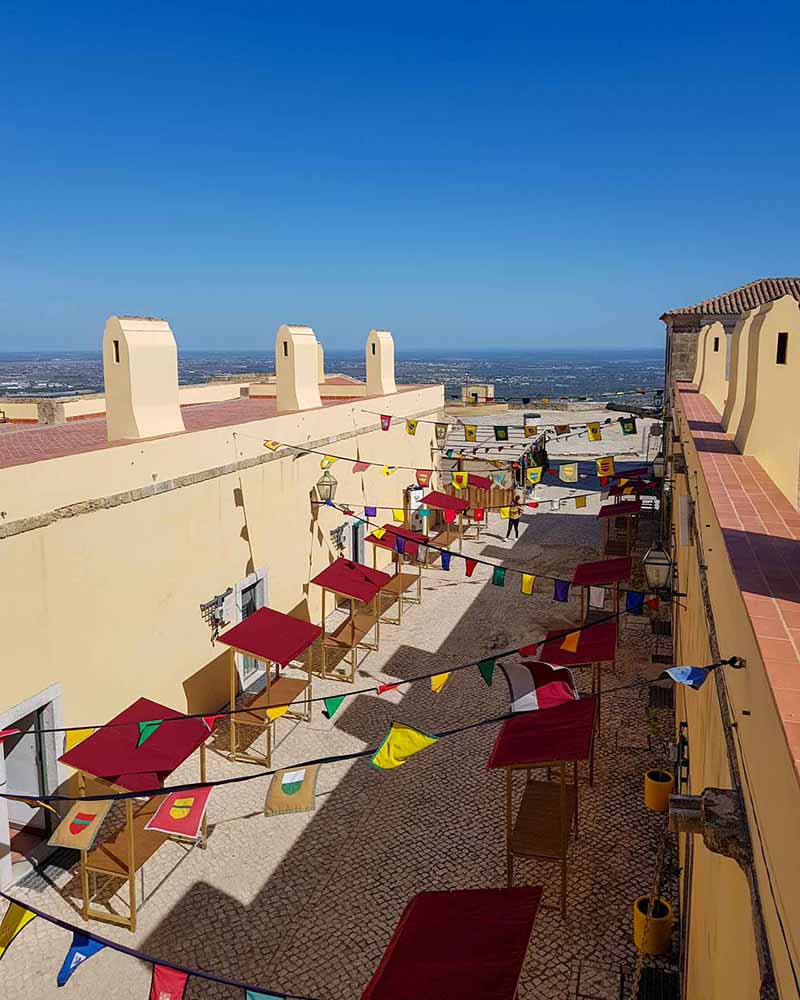
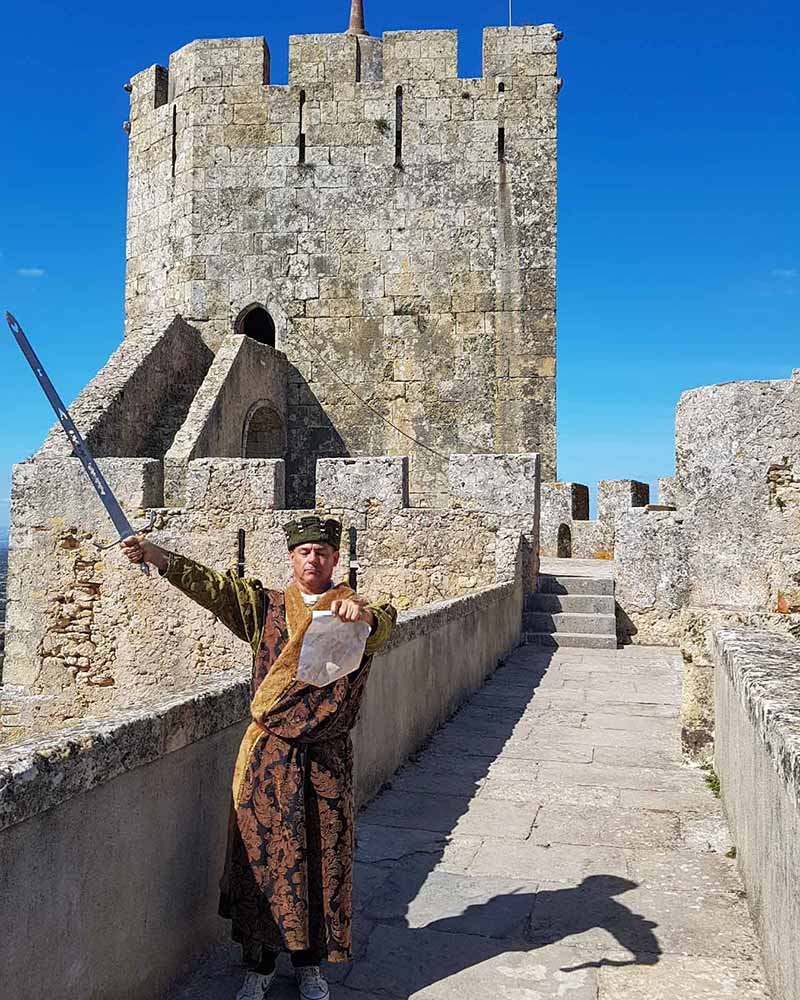
Palmela is a hilltop town crowned by a striking castle. The medieval fortress, originally Moorish, was captured by the Christian forces in the 12th century and later became part of the Order of Santiago. Climb the ramparts for sweeping views over the vineyards of the Setúbal wine region, the Sado River and the hills of Arrábida.
Inside the castle walls, stop for lunch at Taverna o Bobo da Corte, then wander down to Casa Mãe de Rota dos Vinhos (Mother House) for wine tastings of Palmela’s bold Castelão reds and the sweet, amber Moscatel de Setúbal.
Sleep in the castle: Yes, you can sleep at the 4-star Pousada Castelo de Palmela and wake up feeling like royalty.
Caldas da Rainha: creative city of ceramics
How to reach Caldas da Rainha – 70-minute drive from Lisbon; or 80-minute bus with Rede Expressos.
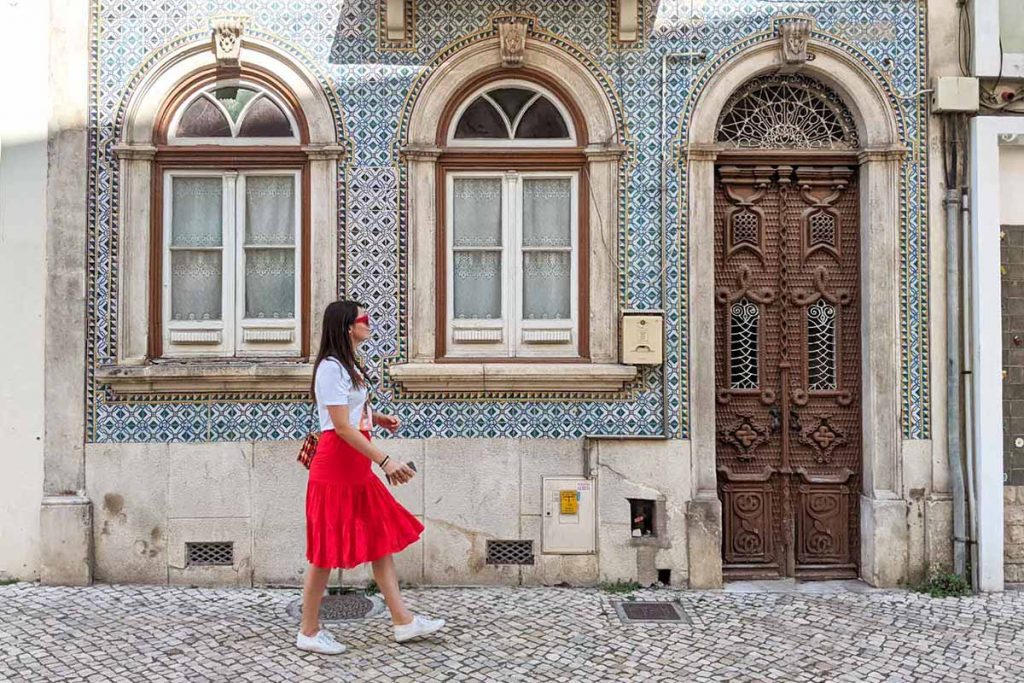
There’s something romantic about Caldas da Rainha, a small, creative city in central Portugal shaped by healing waters and art. Founded in 1484 by Queen Leonor, who discovered the town’s sulfur springs, Caldas remains the world’s oldest thermal spa still in operation. Stroll the leafy Parque Dom Carlos I, once reserved for patients, and admire its elegant lake and 19th-century thermal hospital.
As you explore the town, look for historic façades and playful, oversized ceramic creatures that are part of the self-guided Bordallo Pinheiro trail. You can visit the Bordallo Pinheiro factory store too (bargains found upstairs). Try to go in the morning to shop at the daily farmers’ market at Praça da República, then end the day at Foz do Arelho, where the Óbidos Lagoon meets the Atlantic in a sweep of golden sand.
Best off-beat day trips from Lisbon (deeper cuts!)
Mafra: mega palace, wolves & wild boars
How to get to Mafra – 35-minute drive north from Lisbon; or catch a coach with Mafrense from Campo Grande.
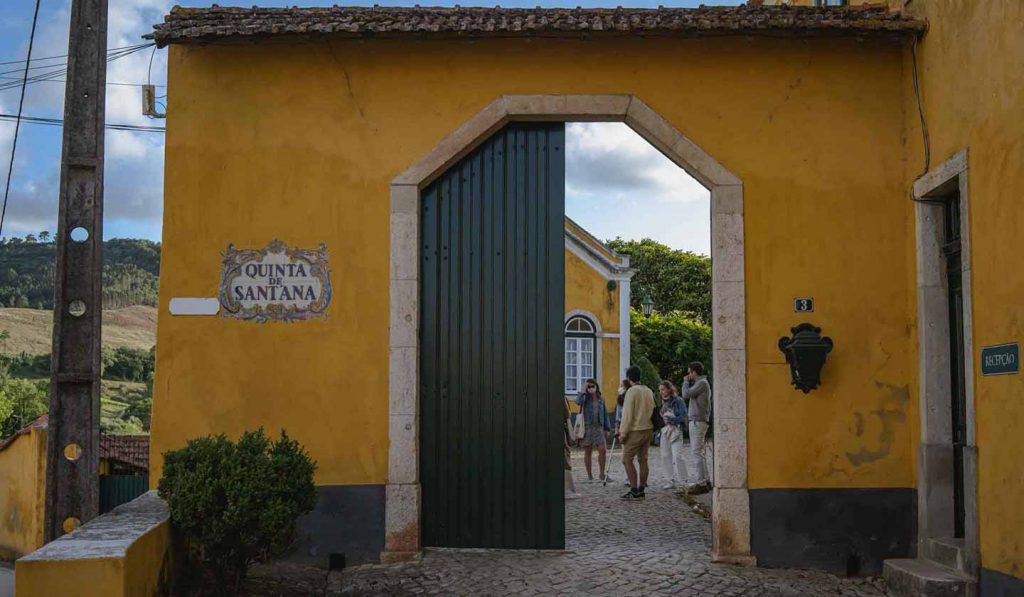
Palácio Nacional de Mafra has Europe’s longest palatial corridor, stretching 232 metres. Built in the 18th century by King João V during Portugal’s golden age, the Baroque palace holds over 1,200 rooms and a magnificent library of 36,000 books, guarded by bats.
After touring the palace and basilica, trade marble for moss at Tapada Nacional de Mafra, a vast royal hunting park where deer and wild boar roam. Nearby, visit the Iberian Wolf Recovery Centre or toast the day at Quinta Sant’ana before heading to the surf town of Ericeira.
Vila Franca de Xira: birdwatching and bullfighting traditions
How to get to Vila Franca de Xira – 30-minute drive north from Lisbon; or 23-minute train from Santa Apolonia Station.

Just 30 minutes north of Lisbon by train, Vila Franca de Xira is a riverside town shaped by the Tejo River and bullfighting traditions. Stroll the riverfront promenade, stop for coffee, and visit the Mercado Municipal – a tiled masterpiece where locals shop for fresh produce.
The town’s early 20th-century bullring still anchors its identity, especially during the lively Colete Encarnado festival each July. Around town, look for azulejo murals, statues, and the Museum of Neo-Realism, which celebrates Portugal’s working-class art. Beyond the streets, wetlands along the Ribatejo estuary attract flamingos, storks, herons and more.
So, in my opinion those are the best day trips near Lisbon. Leave me a comment with your favourite or let me know if I’ve missed somewhere cool…
First published August 3, 2021. Major update November 5, 2025.
Read next…
- Where to stay in Lisbon: Best neighbourhoods & hotels
- My perfect day in Setúbal & Arrábida Natural Park
- 14 things to do and see in Caldas da Rainha
- Portugal Road Trip: Where to stop between Lisbon and Porto
- Best tile painting workshops in Lisbon, Porto and the Algarve
- 22 most beautiful castles in Portugal
- 24 hours in Viseu, Portugal’s pretty garden city
- 16 most beautiful villages and small towns in Portugal
- 48-hour itinerary for Lisbon
- Where to eat in Lisbon
- Where to stop between Lisbon and Seville

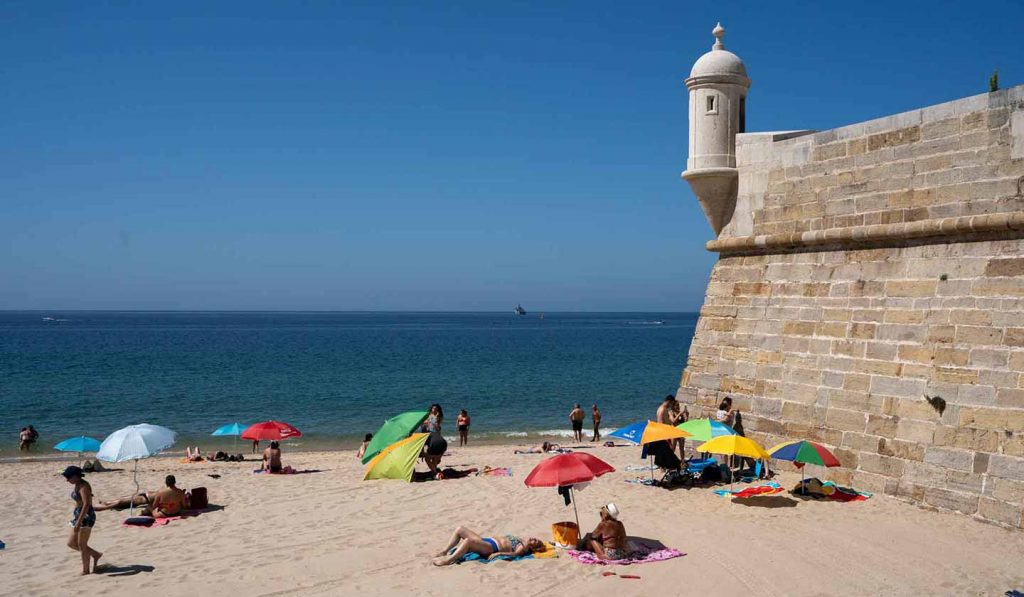






4 Responses
It all sounds wonderful! So awesome to have this for trip planning!!
Glad you’ve found this post useful for your Portugal planning. Let me know if there’s anything else you’d love to see on my site 🙂
Very helpful, easy to navigate, for someone who has never been to Portugal.
My wife and I live in Southeast US, plan to visit a relative who will be staying in Lisbon for 6 weeks(work-related) in December and January.
Any comments about weather during those months?
Hi John! Thanks so much – glad you’ve found my guide easy to follow. I have an in-depth winter guide, actually, that dives into each month and the weather. It’s the ow, rainy season but still fairly pleasant (especially compared to the rest of Europe). December is pretty cheery with all the festive fun, then January can be gloomy – but often we’ll get crisp, blue-sky days when it’s a joy to sit by the ocean or on a café terrace and soak it up. Hope this helps! https://oladaniela.com/guide-to-winter-in-portugal/